
Newsletter Subscribe
Enter your email address below and subscribe to our newsletter

Enter your email address below and subscribe to our newsletter
Bibimbap is a traditional Korean dish that is listed on the top three dishes of Korean food that foreigners must try in South Korea. Bibimbap means “mixed rice” in English and it is a health packed dish that is colourful and flavourful.
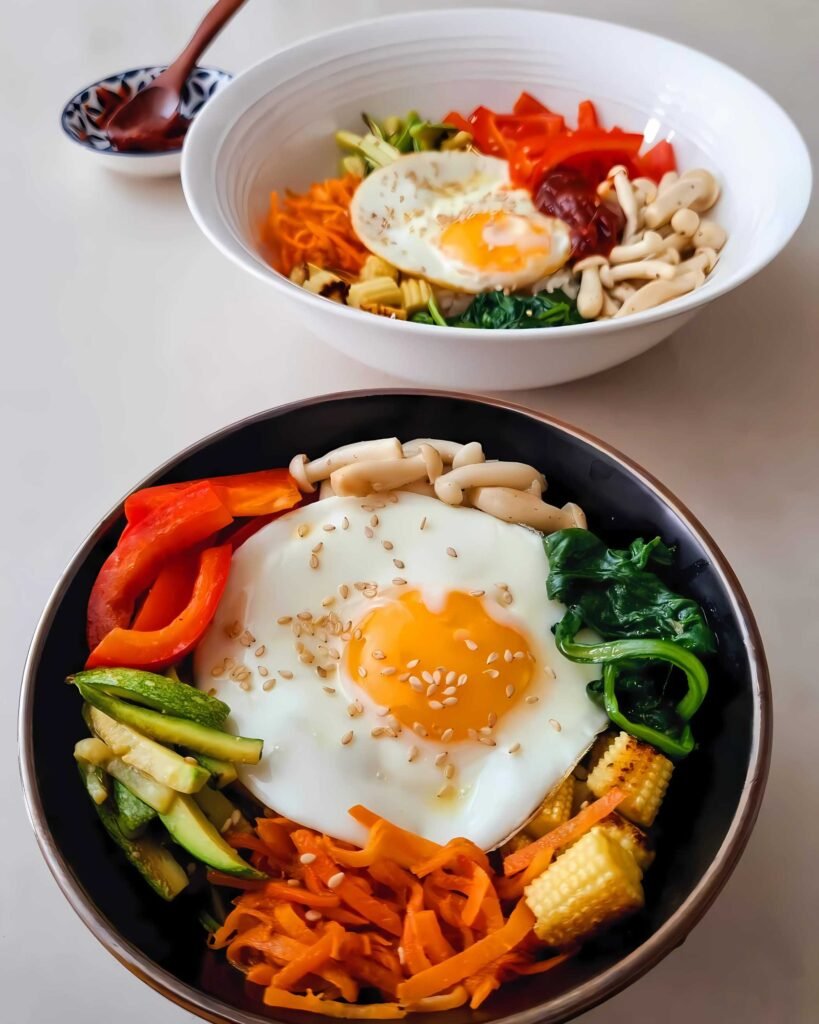
This simple yet, fulfilling meal consists of steamed rice topped with sautéed vegetables, as well as protein such as beef or a fried egg. These varieties of vegetables go hand in hand with gochujang and sesame seed oil so beautifully together. The word bibim means “to mix” in Korean.
While the idea of mixing everything in a dish may seem unusual in some cultures, the orchestra of different flavours coming together in harmony makes this dish special. What is interesting is that different vegetables create different flavours and nutritional values. In order to truly appreciate the taste of bibimbap, a minimum of three vegetables should be used.
Mushroom, Carrot, Baby Corn, Bell pepper, Baby Marrow. Cooking oil & Sesame seed oil. Gochuchang (Korean red pepper paste, typically sold in Asian supermarkets), Salt & White Pepper. Eggs, Scallions, Rice, Sesame Seeds.
Bibimpap is a delicious and vibrant Korean dish made with fresh vegetables. Earthy mushrooms provide a robust umami flavour, while crispy julienned carrots add sweetness. Crunchy baby corn is an unusual addition to bibimpap, but it contributes a lot of flavour. Bell peppers and thin slices of baby marrow add texture and taste.
Sesame seed oil provides a coating to the vegetables; they are also drizzled on during the last step of the cooking process to add more flavour. I’m sure you’re wondering what spices will add flavour to the bibimpap? This dish relies on flavours from the hot pepper paste called gochujang. When gochujang is added to the stir-fried vegetables, eggs, and rice, it transforms into a unique dish rich with flavours.
Julienne, the baby marrow, and the carrots. Slice the baby corn into small cube-like shapes. Cut the bell peppers into chunks. Cut the shimeji mushrooms at the base and separate them accordingly.
Preheat the pan on medium-low heat and add 1/2 teaspoon of cooking oil. Cook the baby marrow for three minutes on medium-high heat. Remove and set aside. Cook the julienne carrots and baby corn on the pan for 3-5 minutes. Make sure to sprinkle a pinch of white pepper.
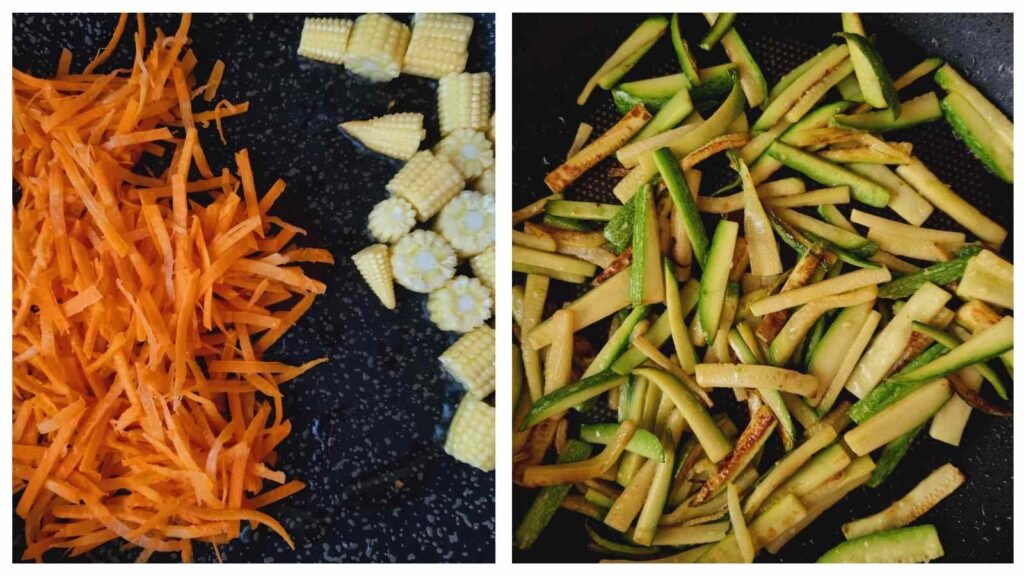
Add the red bell peppers to the pan on medium-low heat with 1/2 teaspoon of cooking oil for three to five minutes. Once the red bell peppers have caramelized, set aside.
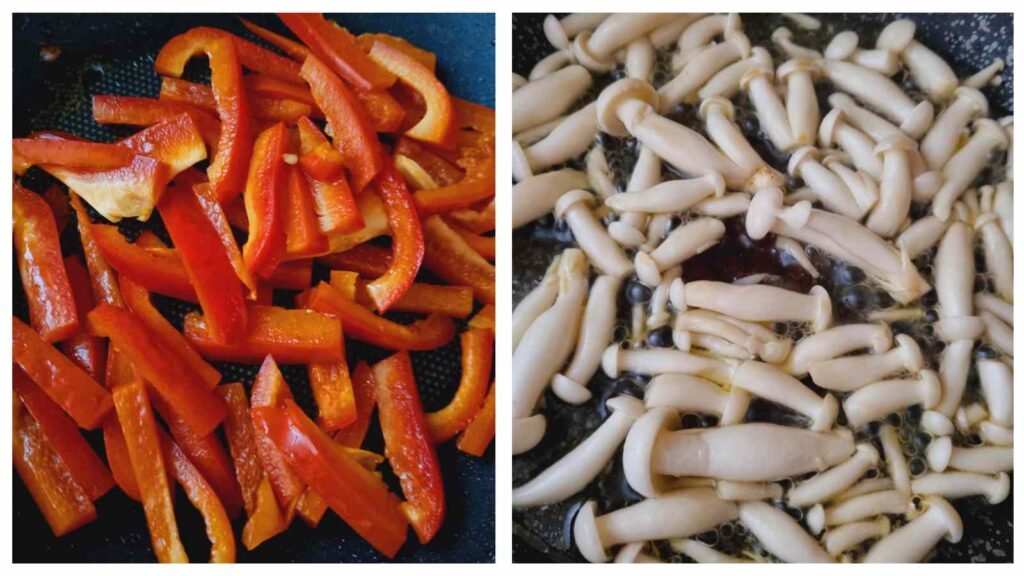
Repeat the process with the shimeji mushrooms. Slice the mushrooms and cook on medium-low heat with 1/2 teaspoon of cooking oil for 3-5 minutes. Add the salt and white pepper only when the mushrooms release water and shrink in size. Do not overcook the mushrooms until all the liquid has evaporated.
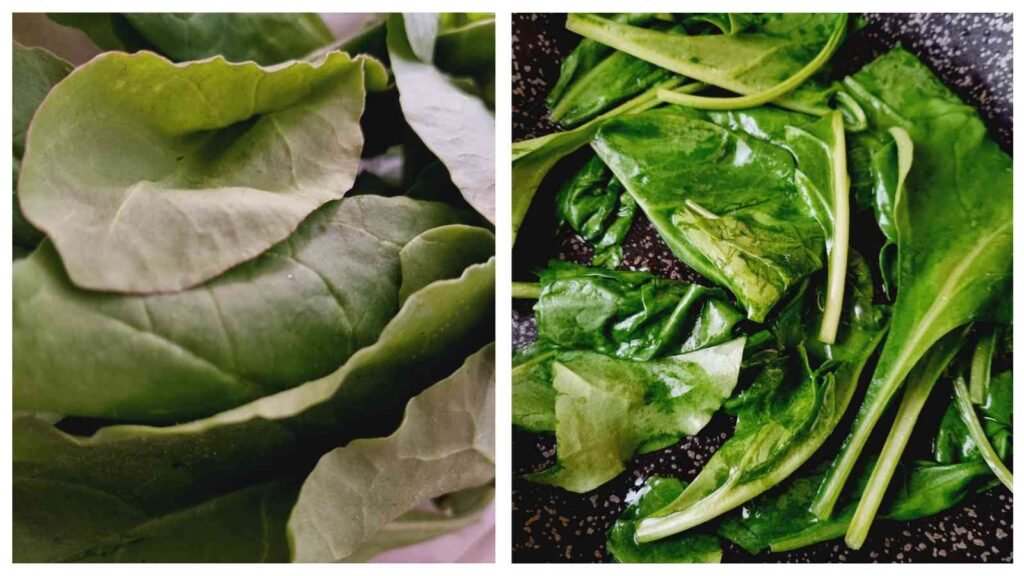
Wash the spinach and pat dry with a kitchen towel. Add it to the pan and cook for two minutes. Lightly season with salt and white pepper. Remove and set aside.
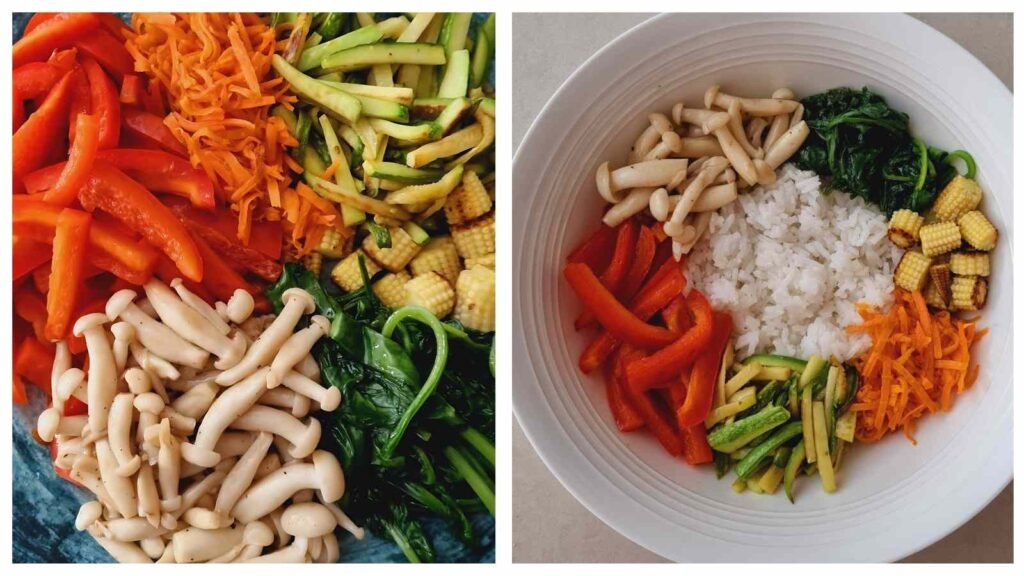
Place the steamed rice in the centre of the bowl and decorate the bowl with vegetables around the rice. Place the Sunny side egg on top of the rice and set Gochujang next to the egg.
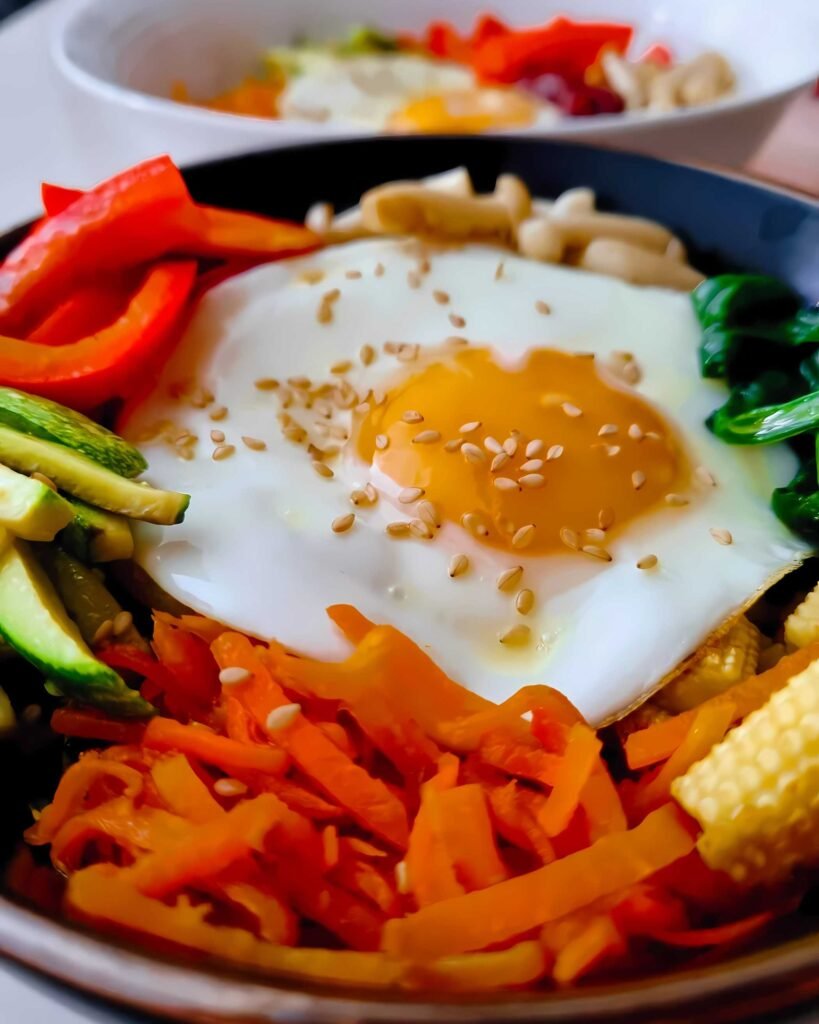
Add a drizzle of sesame seed oil to accentuate the flavor. Thoroughly mix all the vegetables, rice, Gochujang, and egg. Bibimbap is often served with Kimchi and seaweed as a side dish.
To avoid making the vegetables too salty, add a little salt to each one. The fried egg can be substituted with cooked beef strips, beef tartar, tofu, or even seafood as a source of protein. Bibimbap can be made with different types of vegetables, such as spinach, gosari (fern brake), and bean sprouts. The amount of gochujang can be altered to adjust the spicy heat level. Are you looking for a low-carbohydrate option? Well, I have good news for you! Bibimbap can also be enjoyed with brown rice or cauliflower rice.
Bibimpap is full of vibrant vegetables. With the addition of a sunny-side-up egg, it is usually paired with mung bean sprouts or spring onion kimchi. Regular spicy Kimchi is also excellent alongside bibimbap. Dried seaweed coated in olive oil is one of the favoured side dishes accompanying bibimbap. It can also be served with Doenjang Jjigae, a Korean fermented bean paste stew.
You should store the vegetables in a separate container in the fridge. The stir-fried veggies will last for three to four days. You can fry an egg and eat the bibimpap with rice throughout the week. It is advisable to prepare them fresh before freezing.
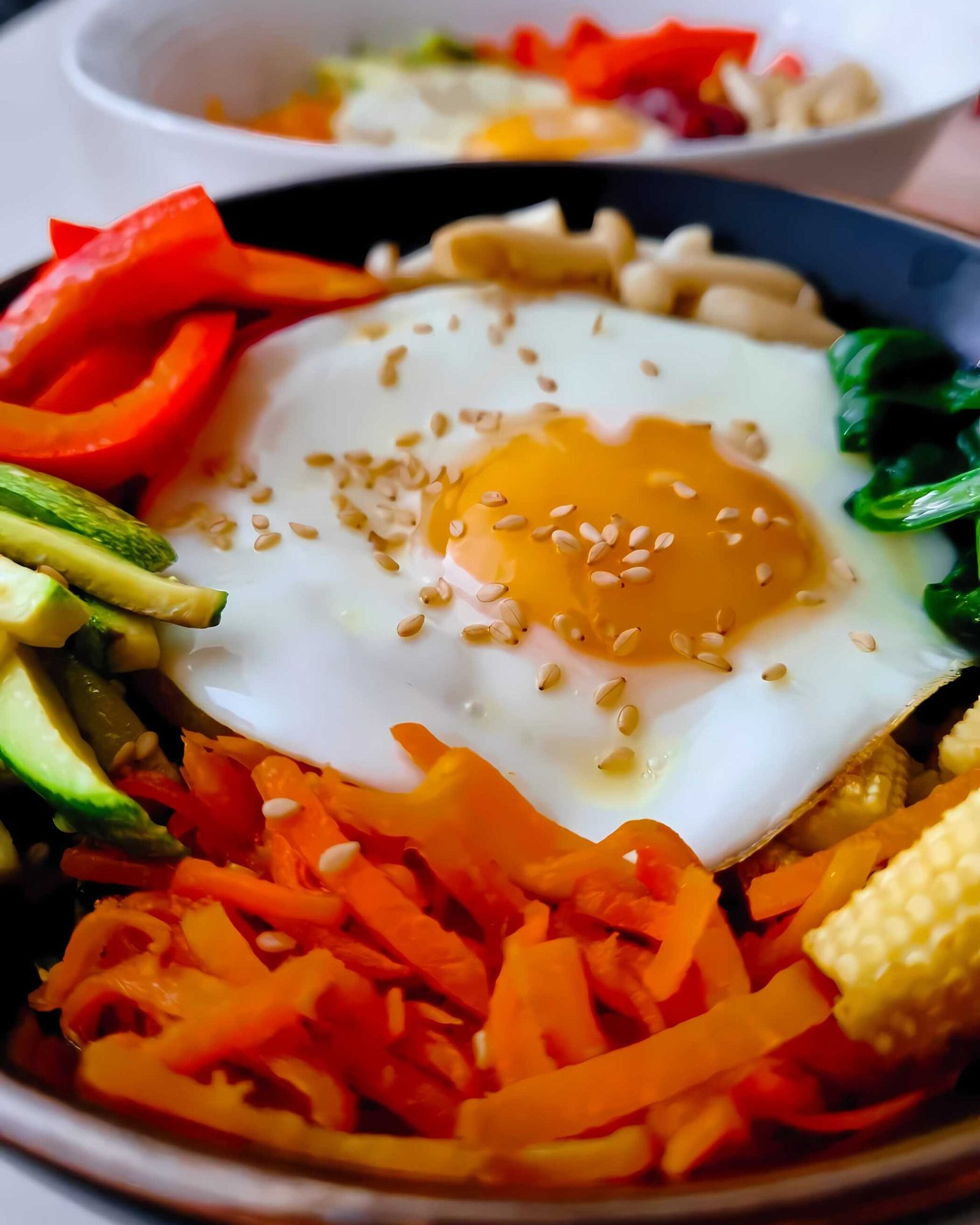
Delicious!